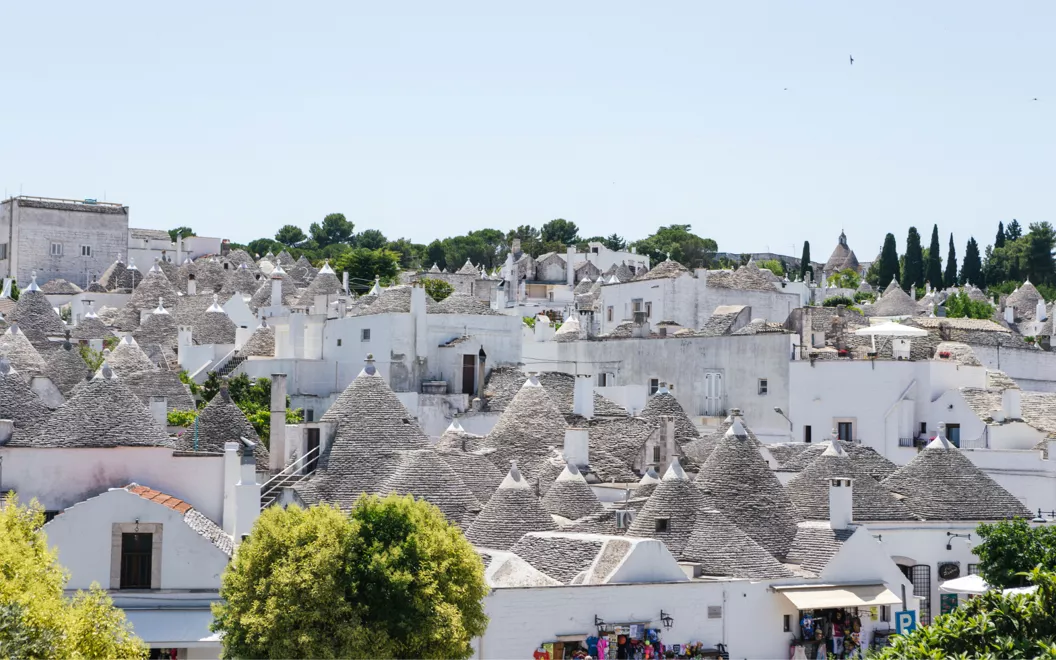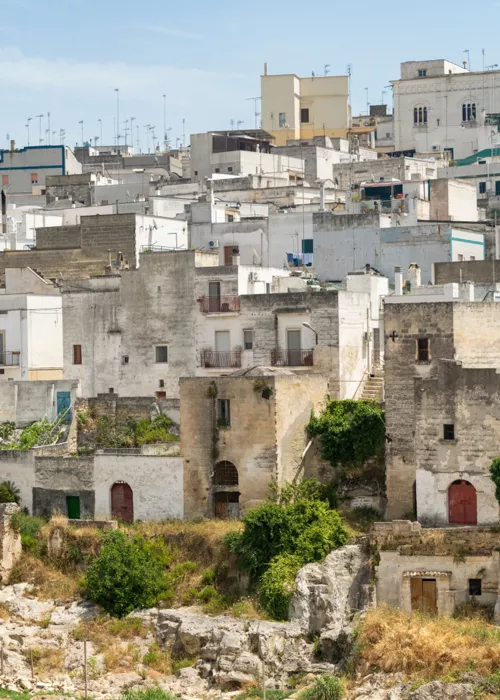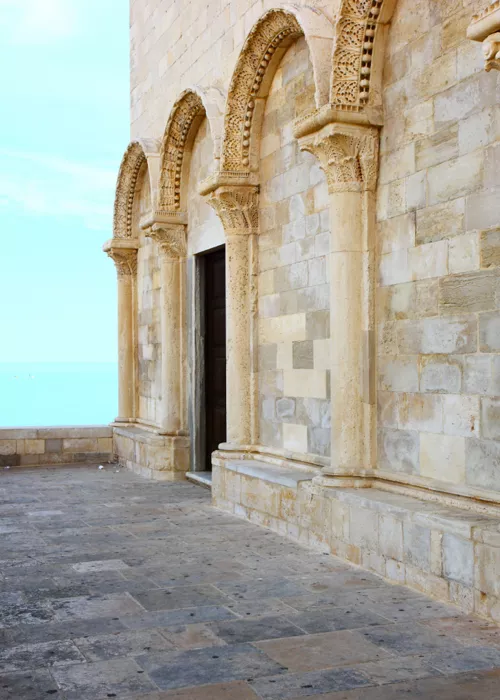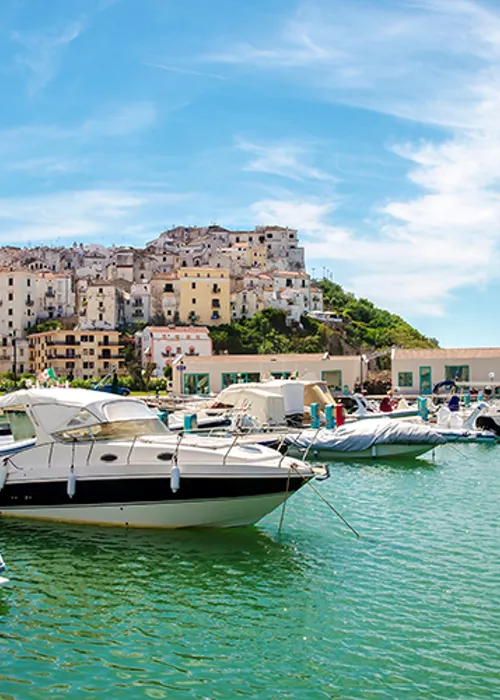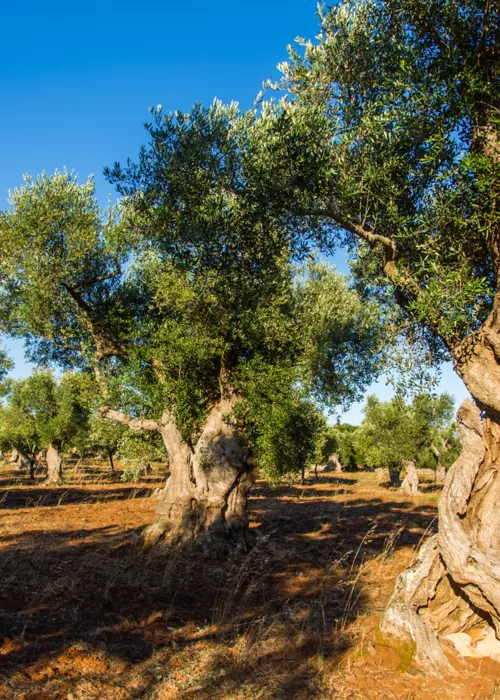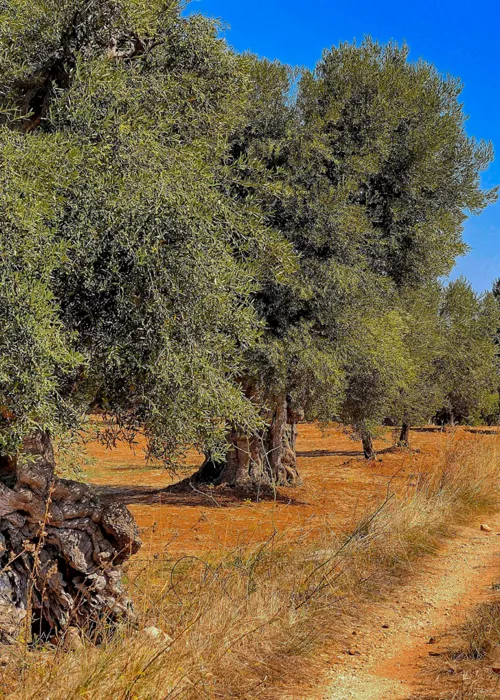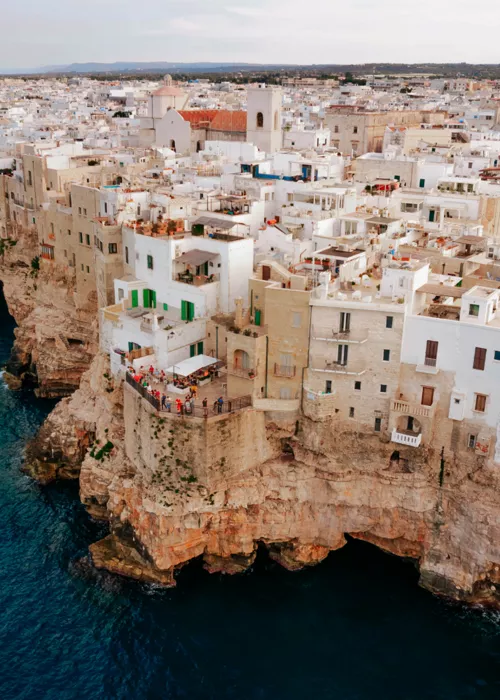Martina Franca

Martina Franca is the baroque pearl of the Itria Valley, its "capital" in the southern offshoot. Wrapped in an immaculate whiteness, it is white, like the white villages that characterise this part of Puglia. But there is something that makes this lively town different from other places. Just look around to understand it, in any square in the historic centre, where the greatest beauty is certainly concentrated, it is a bit like being in Sicily, in Ragusa, or in the Baroque Lecce. The Caracciolo noble family, who held the fief for over 300 years until 1827, developed the baroque soul of the historic centre. Everywhere there are roccoco friezes and frames that amaze with their refinement, such as on the basilica of San Martino and its collegiate church, on the arcades, on the Ducal Palace, on the door of Santo Stefano and in the spectacular Piazza Maria Immacolata, among the most scenic things in the city. But there are also less central corners to which it is a must to dedicate a walk, such as in the Lama, one of the most beautiful districts, which was once the poorest area of the city, while today it is a set of huts that are kept close together and sloping roofs among the most photographed.
Locorotondo

In the evening when the lights of the houses come on, this round-shaped village resting on a cuckoo looks like the hull of a ship stretched out on the port. If you go up on the balcony that surrounds it, you can admire the beautiful view that is called the "promenade". But it's a promenade on the hills surrounding it. But it is a ship that does not have trees on the deck but white houses with sloping roofs. They are the cummerse, less famous than the trulli but no less characteristic. And when at dawn it happens that there is a haze on the valley floor, it really seems to be suspended on a foamy sea. If, on the other hand, you turn to the village, the historic centre appears, from the narrow streets with the basic houses and the flowered balconies, restaurants, clothes lying in the sun and corners to be photographed everywhere. For its valuable urban and environmental context, Locorotondo boasts the Orange Flag of the Italian Touring Club.
Alberobello

The most famous village in the Itria Valley is Alberobello, the village of the trulli. The buildings that owe their origin to an edict of the kingdom of Naples that in the fifteenth century provided for a tax for each building built. To escape these exorbitant tributes, the counts of Conversano had the idea of having the peasants build dry shelters that could be easily dismantled in the event of checks. And so these round huts with self-supporting dome roof were born as a more practical solution for any eventuality of dismantling.
Despite the precariousness, with the passage of time the techniques were perfected and today these houses, as many as 1500 in Alberobello, are still standing and the historic centre, declared a Unesco heritage site, is a fairytale village scattered with polished trulli and occupied by souvenir shops, clubs, restaurants and b&bs. Borgo Bandiera Arancione of Touring Club Italiano, composed of the Monti sul colina district and the Aia Piccola district, Alberobello is a set of stone paved streets in which the white of the walls of the trulli plays to contrast the grey of the stone of the roofs. And since it is a unique place in the world, here you have to juggle in the crowd of visitors but at the end of the slalom there is the balcony of Santa Lucia, a viewpoint of extraordinary beauty, which can be reached by walking along a staircase of poetic phrases. From here the view is splendid on stones and plumes, in an infinite expanse of variations of grey and white.
Grotte di Castellana

The Castellana cave complex is located in the village of Castellana Grotte, a ten-minute drive from Putignano. It was the speleologist Franco Anelli who first descended from a small pertugio in 1938 and discovered with unimaginable amazement what was hidden below: a spectacular 60-metre crater, which was called Grave. Once you enter the cave, what you find in front of you is the spectacular effect of the sun's rays that pierce the hole at the top of the cave, illuminating the cave. But this is only the beginning of a journey that lasts a maximum of two hours and takes place between stalactites, stalagmites and rock walls that in some places are very high. At the end, the amazement reaches its peak when you reach the White Grotto, a set of alabaster concretions that reaches incomparable levels of splendor so much so that the rocks look like corals at the bottom of the sea. The Speleological Museum is dedicated to Franco Anelli and offers guided tours of the cave. It also offers guided tours of the Sirio Astronomical Observatory of Castellana Grotte, equipped with a multimedia room to observe the celestial vault.
Cisternino

Cisternino never ceases to amaze, and for various reasons. One of these is certainly the geographical position on a hill overlooking the surrounding countryside, which, especially at sunset, turns into a golden expanse. Secondly, the historic centre is small and for this reason, even more beautiful, white like the Itria Valley but dotted everywhere with coloured patches of flower vases. In summer the square is particularly lively, but if you move a few steps, an unreal silence and peace reign. Awarded the Orange Flag by the Italian Touring Club, the town is very ancient and was reborn after the barbarian invasions thanks to the medieval monks who built an abbey there, on the site where the Mother Church of St. Nicholas stands today. But today the most famous attraction of Cisternino are the stoves: the so-called "choose and eat", a popular way in the Itria Valley but in particular here, to taste grilled meat at a super reasonable price. Sausages, "bombette", rolls, livers are on display at the counters of the butchers-gastronomies where you can follow the cooking at the moment.
If, however, you move a little, in the district of Figazzaro, the Botanical Conservatory I Giardini di Pomona, collects a collection of plant species including 600 specimens of Afghan, French, Portuguese, Albanian, Israeli and Apulian figs among the most important in the Mediterranean. Also in Figazzaro, there is the stretch of the Puglia Aqueduct Cycle Route, which can be traveled for 15 km to Cisternino, which allows you to pedal safely among wonderful views in the middle of the Mediterranean scrub of the Itria Valley.


